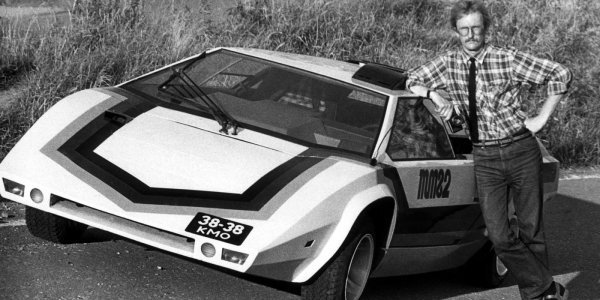
The Soviet Union although he had several powerful brands, the diversity of the models of cars not particularly pleased. Foreign brands, the road to the socialist market was closed, and motorists wishing to contemplate not only “the Zhiguli” and “Muscovites”, remained except to scroll brought from East Germany or Poland where logs are periodically described models from Western countries. Hunger to bright cars growing up, and it was fertile ground for the emergence of the Union of the whole movement of designers who have developed their own vehicles, collecting them literally on the knee. In major cities held a full car show with participation of such machines. In this article, we recall a few outstanding projects “SamAvto”, which at the time made a lot of noise and glorified their creators.
Laura
They say the smaller the country car, the more motorists. In 1970-1980-ies in the USSR the car was good if every tenth family. But the lack of young people interested in technology, was not observed. In those years the scientific-popular magazine “technology towards the youth” was not only scientific, but also really popular and has organized various meetings to their subscribers.
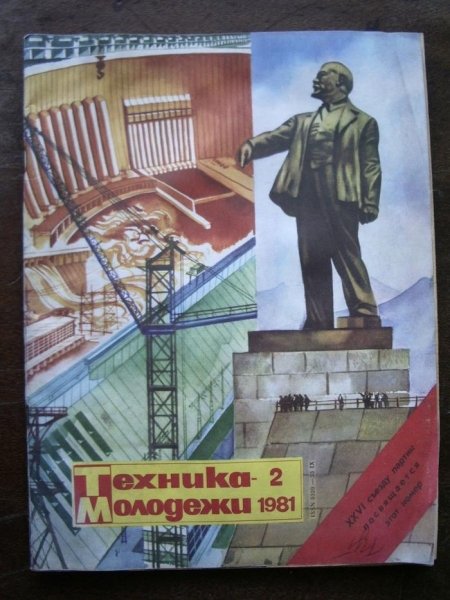
“Tekhnika — molodezhi”, 1981. Photo: meshok.net
The most spectacular and large-scale events under the auspices of the edition was run on home-made cars. Sense of scale? Dozens of young enthusiasts drove cars made of epoxy resin and sticks to his father’s barns. Most often, constructors have not even been in the ownership of a regular production car! But there was passion and a desire to create something unique. It is on this mileage “homemade” in Leningrad in 1981, the friends Gennady Khainov and Dmitry Parfenov decided that they, too, need to collect its own vehicle for expression. But two is better.

Photo: carakoom.com
The path from words to deeds the boys was short-lived, and in 1982, they found an abandoned garage on the outskirts of the city, armed with old water pipes and set to work on the project. Before to draw the design of future machines, they called them “Laura”. The scenario of Steve jobs in the USSR was impossible — the guys continued to work on the main jobs to earn a living and in my spare time I arrived at the garage and engaged in her Hobbies was building real cars. Gennady already graduated from College and worked in the design Department of the shipyard. Dmitry was an electrician in another enterprise.
The guys decided to build two identical cars, which facilitated the design process. On the drawings and a rough design of “Laura” took four months. Later, in an interview with the author of the book “I build a car” by Vasily Zakharchenko Dmitry and Gennady remembered that every day after work he came into the garage and left it only in the morning.
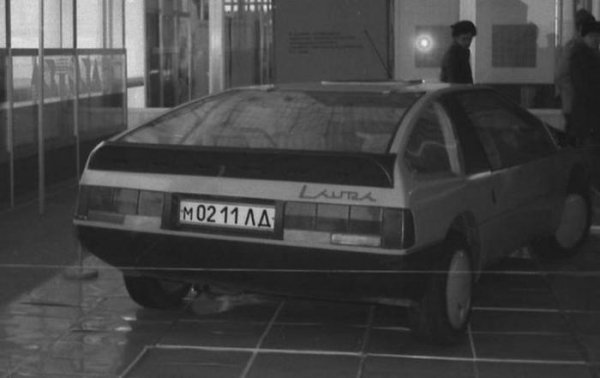
Two weeks it took to cut the water pipes for the future framework. Welding was carried out at the station, where he repaired farm machinery, — worked there their friend Alexander Popov, who helped weld the two frame. But the hardest part was yet to come. For the construction of the machine took almost three years. The most time consuming process was the creation of a beautiful body. The drawings in the drawings, but the guys had to literally “sculpt” the exterior of the machine of foam, cutting off the extra items the knife and looking at the sketches, Refine the shape with sandpaper. When the silhouette of the body was mostly like the pictures, the surface is papered with fiberglass impregnated with epoxy resin. On top added a layer of putty, which eventually was applied the paint.
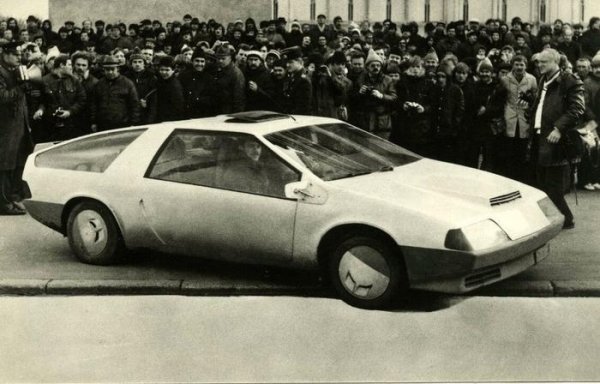
As the power unit was used the engine from the VAZ-2105. The most suitable transmission was MKP “Zaporozhets”, which had to be rotated 180 degrees. In the transmission used elements from the “Fields”, and the drive was placed on the front axle. If that time had already produced a model VAZ-2108, the nodes would be ideally suited for “Laura”, but “eight” debuted when a homemade car of Dmitry and Gennady was in full swing. Had to sculpt FWD-hatchback that was.
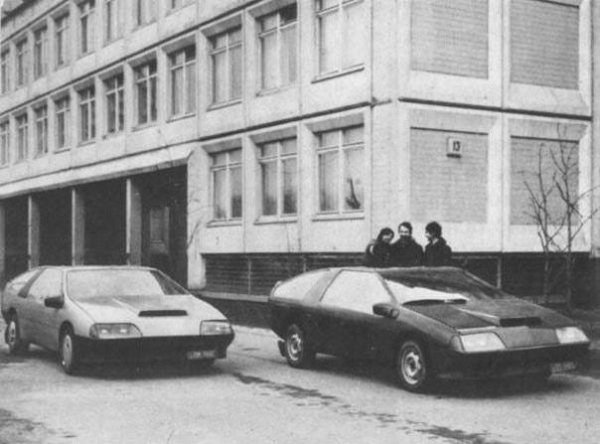
When glassing and optics machines were ready, the guys conducted a test of “Laura” around Leningrad. Everyone thought that foreign cars: innovative design stood out homemade hatchbacks against “Lada”, “Muscovites” and “Volga”. They say that the car was able to accelerate to a speed of 165 km/h. In 1985, both models were fully prepared, and their creators invited to the show “you can”. Then there was participation in exhibitions, numerous interviews, mentions in books and in the end order from the Minister of the automotive industry Polyakova. But that’s another story.
Murena
Another Soviet enthusiast-designer — Nikolay Doroshenko — started to build my car over in 1983-1984. Inspired by Italian sports cars, a resident of the city of Sumy he began to construct a basis of the future vehicle called the “Moray.” The platform was developed from scratch, although some elements were used from the serial technique. So, with the front suspension what the guy at the Serpukhov automobile plant, which produced subcompact microcar. The rear part of the chassis was assembled from what was.

Photo: auto-junior.info
The guy was initially focused on the design, not on driving characteristics, so most of the time working on the project went to the design of complex body. All the external elements were made of the most suitable in those years material — fiberglass. The design feature of “Morays” is the lack of doors. In order to penetrate into the interior, had to literally tilt the whole Central part of the car along with front and b-pillar and even the roof.
The engine was located behind the driver and front passenger, and drives the rear wheels. For a mid-engine layout was perfect for the engine of the ZAZ-966. Transmission was used from another Zaporozhets — 968-go. For all its sports appearance, the car was quite slow. They say that during tests it barely reaches 100 km/h. But in 1987, the car drew the attention of the journalists from magazine “modelist-Konstruktor”. Later, Doroshenko became one of the heroes of the books mentioned “I am building the car” (if you are interested in Soviet design school, you should read it, it is in the public domain).
“Sport-1500” (and later “mercury”)
Homemade cars of the USSR was always an unusual and interesting both externally and constructively. But rarely “garage designers” possess the necessary aesthetic taste to create a truly beautiful body. It turns out machine, as if descended from the fields of school notebooks. Enthusiasts was satisfied by the fact that their creations can move independently, not bothered on the exterior. And certainly nobody would hire designers. Yury rubel belonged to the rare category of engineers, which is also beautifully painted.
At the Moscow Electromechanical Institute of communications remember the warmth of Rubel, who studied here and actively communicate with the teachers of AVTOMATIZACII. Yuri did not just came up with the idea to build a “what happens”, and are deeply immersed in the study of Western cars, were analyzed by Italian bodywork Studio. Besides, the guy was friends with the designers, which have built in garages their cars, and, of course, was a constant reader of the edition “Technics — youth”.
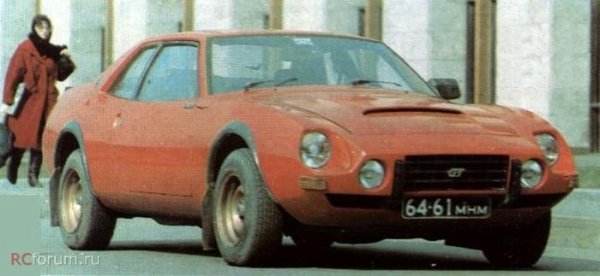
Photo: rcforum.ru
In the mid-1970s, Yury rubel started building his car. The work was carried out in the basement, where the young enthusiast has designed a special device to fix the frame of the future car. Unlike most “DIY”, this wizard first things first organized yourself a comfortable workspace, and did not cook the frame. His approach was more like a professional manufactory of some small-scale sports car. And the result was relevant. Even the experts couldn’t believe that the car is assembled independently, and not in the shop of the enterprise.
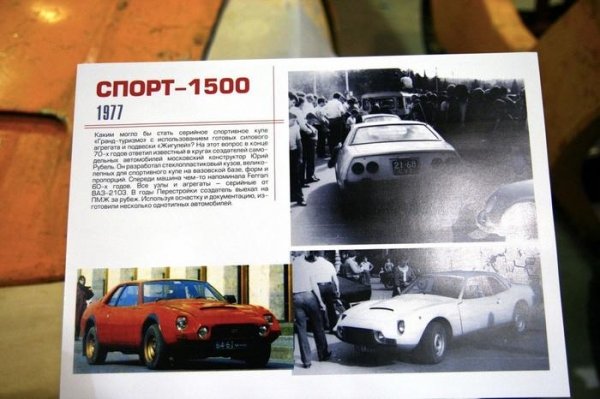
Photo: cardesign.ru
The work was completed in 1977. The basis was taken nodes VAZ “three”. Yuri did not invent a Bicycle, and almost all units moved on his car with stock car. Carburetor engine had a volume of 1.5 liter, transmission — 4-speed “mechanics” from Togliatti. But the main highlight of the project the Rubel was design. Coupe, called the “Sports 1500”, easily would fit into a portfolio Pininfarina or Bertone. And it’s not just a pretty shell made from fibreglass — the proportions and layout of the car was well designed and met the requirements to foreign cars of the GT class of the time.
Great attention the jury paid to the interior, which are usually not worried about working on self-made car guys. Hundreds of times sitting in the driver’s seat, the designer has chosen the optimal position of the control units and even door handles. Working on the chair, the Creator of the car “Sport-1500” sought to make a form so your back doesn’t get tired during the day. I do not in Le Mans if you were aiming for a young designer? It is quite possible, given that the model had perfect weight distribution of 50:50, and in terms of safety this vehicle is fully complying with the strict regulations of the sport. For example, the gas tank is located in the most safe place — behind the rear seat. Hatches of the tank was on both sides, and the range at full fuel was 1000 miles.
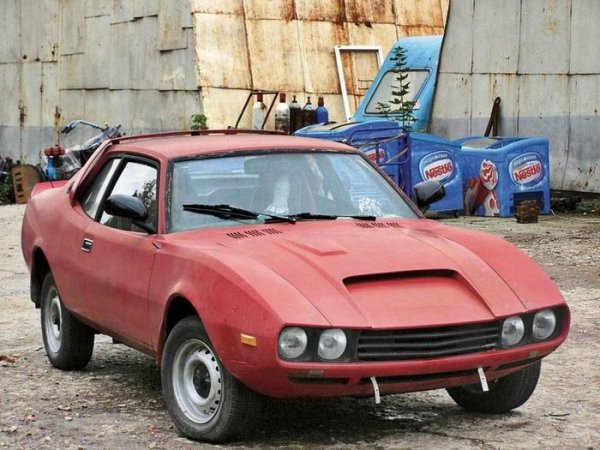
For this project Yury rubel received the medal of ENEA. Later, his drawings have built several similar cars. In 1982 in Moscow was designed by the successor of “Sport” — vehicle called “mercury” (photo above), this time for units of the VAZ-2106. Over time they built five instances of the model. Some of them are still in various museums.
VEGA 1600 GT
A self-made cars came in the highly specialized journals, and even books. But to get on the cover of the main car magazines of the USSR magazine “Behind the wheel” — it was not easy, and dreamed about it any “garage Builder”. In 1988 a dream came true the engineers AT Foton from Simferopol Vitaly Rudenko and Alexander Kostin. Their sensational coupe the VEGA GT 1600 interested the editor of the magazine, about the car did a big report.
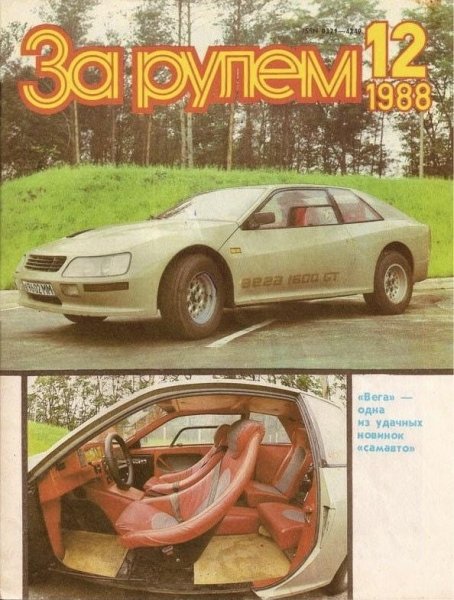
The cover of the magazine “Behind the wheel”, 1988. Photo: auto-junior.info
Today journalists peck would be if they carried gathered in the garage the car with the motor from “penny” to the class Gran Tourismo. But the printed editions of the late 1980s did not have under the articles of the review, so the authors were bolder in their judgments. “VEGA” without much modesty compared with Western sports cars and savoring refined literary expressions, described all the advantages of the model. The main feature of the 1600 GT was a door opening to the side and forward. They provide easy access in four salon even in tight Parking spaces. If someone was seen in the Soviet Union crowded Parking lot. A similar solution, after several decades of used Peugeot 1007 (door only moves back).
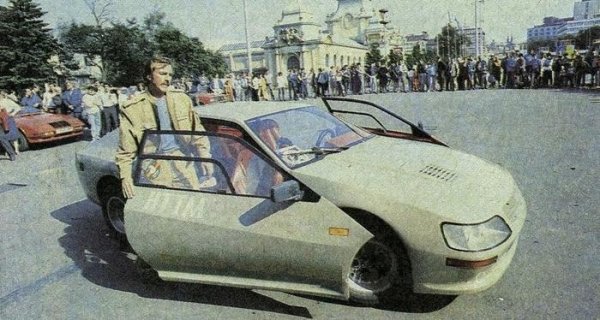
Photo: auto-junior.info
The car is equipped with 1.6-liter engine and 4-speed “mechanics”. The design uses the units from “Cossacks” and even Luisa. Car until recently was all over the Simferopol. On Drive2 is a user who claims that he is the son of Alexander Kostin. Logbook VEGA though a bit empty, but there are interesting archival photographs.
“Aurore”
While numerous Soviet “domestic engineers” have designed their projects in basements, sheds or garages, Henrik Matevosyan from Yerevan several years he worked on his project… on the balcony! Individual compact elements of male gathered in the room, and then took out to the balcony and joined them, watching as the light appears a full car. On the project Henrik started to work in 1978, and asphalt machine called “Aurore” for the first time, touched in 1980. the Car was lowered to the ground by a crane!
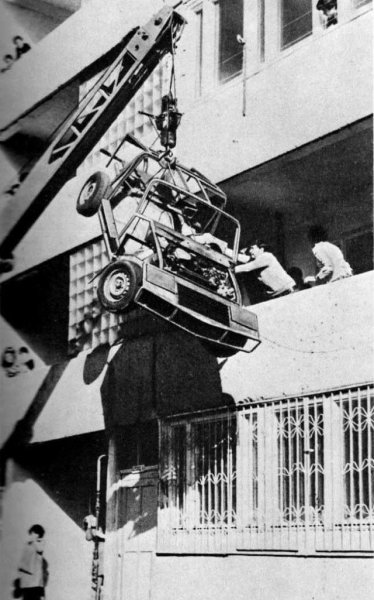
Image from the book “I am building the car” (Vasily Zakharchenko)
Like many other self-made cars of the time, the main feature of the project Matevosyan was the door. They opened up on the principle of “gull-wing”. Why craftsmen tried to make the most unusual penetration into the cabin? It is difficult to answer unequivocally. Perhaps that is the door, and optics allowed fully to exercise “creativity” and make a distinctive, memorable car. “Aurore”, which translated from Armenian means “the Seagull”, were equipped with more and lifting far the main element of a sports car of that time.
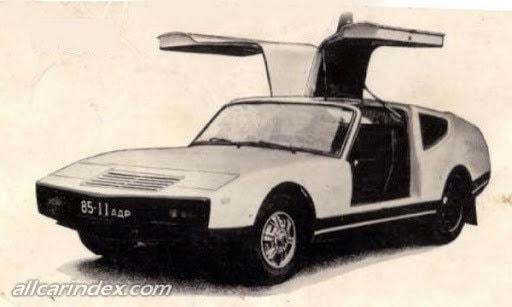
Photo: allcarindex.com
In the apartment and on the balcony Henryk built a frame and mounted on it the power unit and body parts and rising doors were hung later, in the garage. Technically the car didn’t hold any uniqueness. The engine VAZ-2101, the drive to the rear axle. Thanks to the reduced in comparison with the “Lada” weight and improved aerodynamics, the coupe was accelerated tests to speed of 170 km/h. This car was the subject of several articles in various journals.
“Pangolin”
The era of the Soviet movement “SamAvto” culminated in the early 1980s. hundreds of young people tried to Express themselves through their projects, welding the frames of all that came to hand, juggling the engines, boxes and bridges from the production vehicles of the USSR and hitting the neighbors garage cooperative suddenly appeared a miracle-the car of unknown origin. In 1980 in Ukhta young electrician Alexander Kulygin led technical club for students. Classes, children attend not for show. They built their Lamborghini!
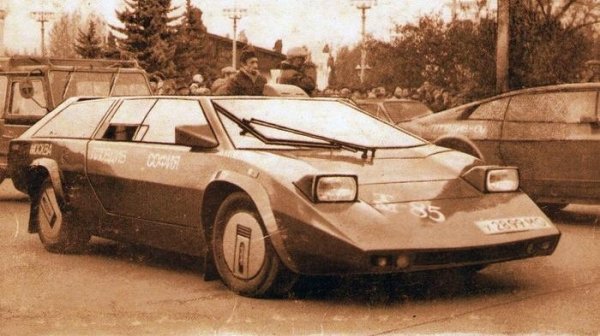
Photo: xcom-hobby.ru
The project called “Pangolin,” and, drawing machine, Kulygin was inspired by Italian sports cars of the late 1970s. After completion, the car was brought to Moscow, where he created a body for this purpose compartment. The author of the project over social media, and “Pangolin” learned General public. For all its “Lambo-appearance”, the vehicle is technically not much different from the same “Zhiguli”. According to Alexander kulygina, the most difficult stage of construction of the car was the body. The intent of the Creator, externally, the car had to look like an Italian sports car, but the engine was handmade in front. Had to go to lengths to place the power unit close to the cabin. Of course, the security level of this machine is far from ideal, but the shape turned out really memorable.
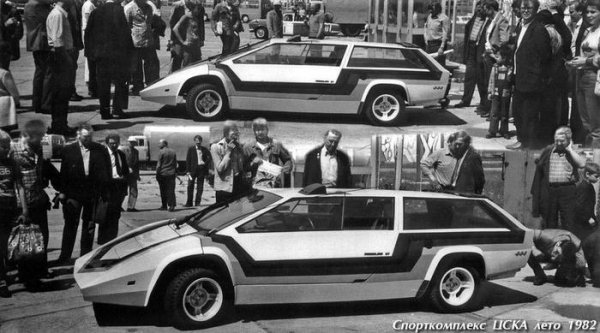
Photo: carakoom.com
In contrast to the same Countach, the salon “Pangolins” could seat four adults. To achieve a practical managed just due to the location of the engine. Doors there was no, and access to the salon, like “Moray”, was carried out through the hinged part consisting of two racks, side panels and roof. Up raised almost half of the car!
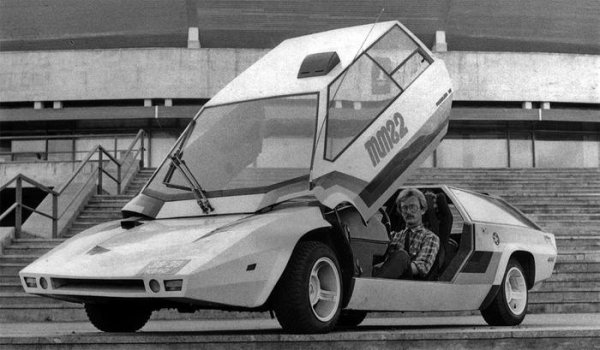
The success of the project has led to the fact that kulygina was invited to work at AZLK. By the way, in the development of production vehicles, he never participated. After the collapse of the USSR Alexander went to the USA and released there kitchari. In 2004, he was tragically killed in a car crash.
<hr/>
In the 1990s, a number of homemade products on the territory of the former Soviet Union has significantly decreased, the movement “SamAvto” came to naught. Apparently, to create their cars people are pushed by lack of access to interesting models of world manufacturers, and when foreign cars flooded into our land, the enthusiasm of the people waned. And time for such a hobby from people left. Enough in that period other problems. I am glad that the work of Soviet designers of single immortalized in books and on specialized sites.
© 2019, paradox. All rights reserved.





